Here are my reasons why I was so interested in this new lens:
* I use the Canon 16-35mm f/2.8L II at every event I shoot. It is my "go-to" lens for all wide angle shots, and I shoot a ton of wide angle shots or people dancing at parties.
* After shooting with ultra sharp lenses, like the Canon 70-200mm 2.8mm II, Canon 24-70mm f/2.8 II, the 16-35mm f/2.8 II lens always seemed a little soft to me.
I received my new Canon 16-35mm f/2.8L III from B&H photo the morning I left for the PhotoPlus show in New York. So...my testing of this new lens was delayed by my travels and other commitments. If you have read my other reviews, you know that I like to use the new products for a little bit before writing a review. This way I can see how it performs in real shooting conditions and see if there are other things I like or dislike, that were not apparent at first look. But now I have had a chance to put it to it's test and give you all the results. If you read the last blog post, where I had the once in a lifetime chance to shoot from the top of the Golden Gate Bridge, you know that I chose this new lens as my lens of choice. It was the perfect place to put this lens to the test! If you look at those photos, you see that the lens performs really nicely...but...how does it compare to the older version II lens?
I started the test in my home office, pointing the Canon 5D Mark IV and both lenses at one of my autographed helmets. I had the camera body mounted to the Acratech ball head on my Gitzo tripod and just swapped out lenses for each test. I also removed my Tiffen HT filters for the test, even though I don't believe I lose any quality from these top grade filters.
I have posted all photos in this blog post at full resolution so that you can open the full-res file and see the comparison for yourself. Note: I have not sharpened or adjusted the RAW files in any way. These are all straight out of the camera.
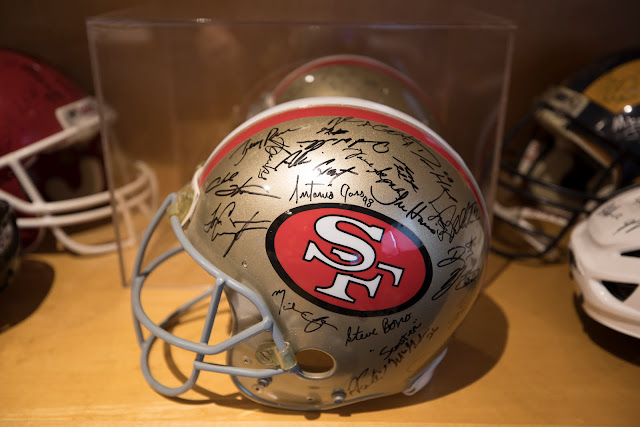 |
| Version III (Click to see full resolution) |
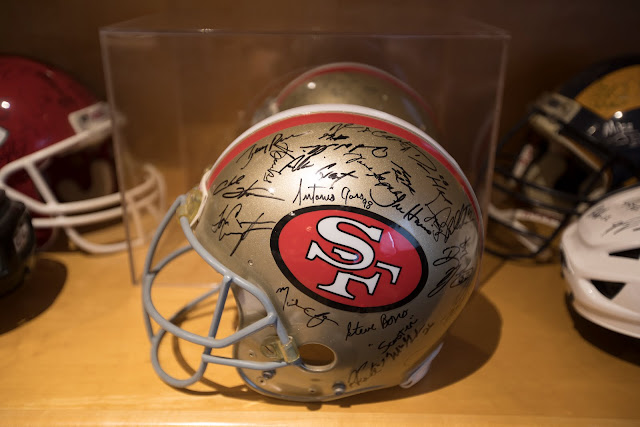 |
| Version II (Click to see full resolution) |
After walking around my house, looking for a new test subject, I decided to use a painting that I picked up on my last trip to Tanzania. It has a lot of detail, and also happens to be nice and wide. I also decided to print out a "label" letting me know which lens I was testing. This made it easier for me to keep track of which lens I was testing.
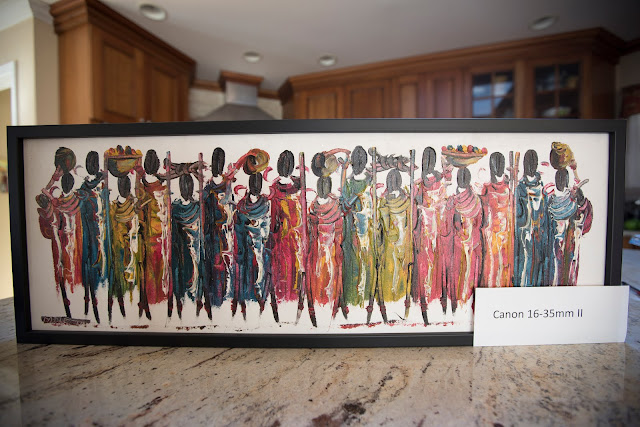 |
| Version II (Click to see full resolution) |
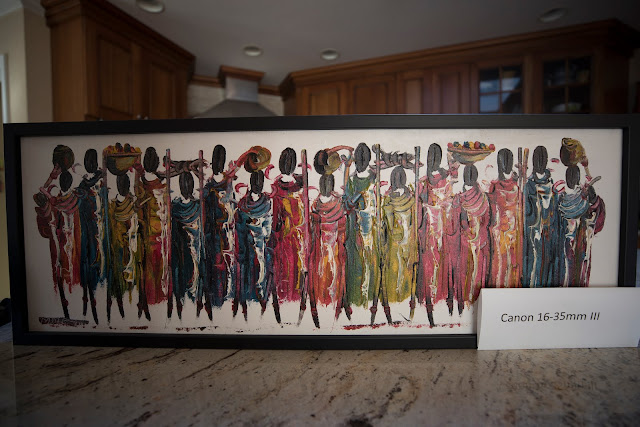 |
| Version III (Click to see full resolution) |
What is not correctable is the sharpness of the lens. Let's look at that comparison.
UPDATE: I just updated my Lens Aberration Correction on the camera, and this has removed the light fall off that you see in the images above. If you want to update your Canon camera, check out this link.
(For all the photos below, the older model is on the left and the newer lens is on the right)
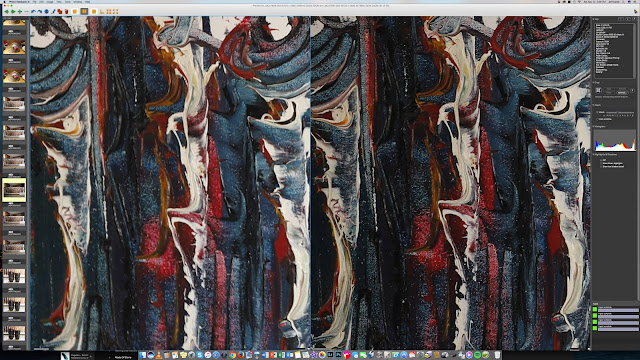 |
| Comparison at Center of lens at f/2.8 (Click to see full resolution) |
 |
| Comparison at right edge of lens at f/2.8 (Click to see full resolution) |
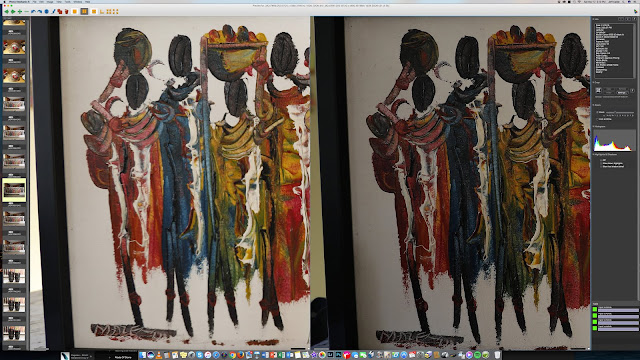 |
| Comparison at left edge of lens at f/2.8 (Click to see full resolution) |
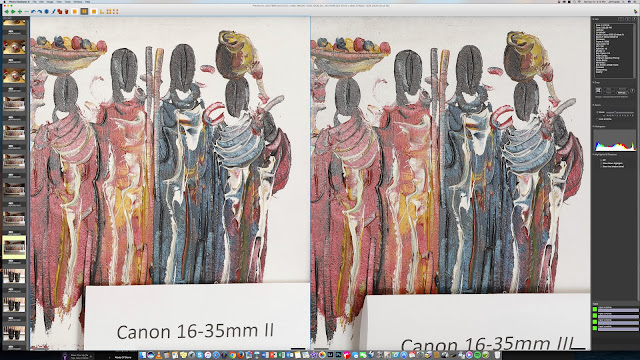 |
| Comparison at right edge of lens at f/16 (Click to see full resolution) |
As you can see, the difference between the new Canon 16-35mm f/2.8L III lens (left) and the older Canon 16-35mm f/2.8L II lens (right) is pretty dramatic. The new lens looks and feels more like the newer Canon 24-70mm II lens than the older 16-35mm lens. The new lens maintains the same 82mm lens size but feels more solid. The version III does weigh a little more than the version II, but it feels more balanced in the hand. I like that.
All in all, the new Canon 16-35mm f/2.8L III performs really well and is a welcome newcomer to my camera bag. This lens does not come cheap, at a price of $2200, but since I rely on the 16-35mm for all my wide angle shots, I am willing to invest the money to get my clients the best possible images possible. For the last couple of years, I have been saying that this focal range was the weak spot in Canon's lineup, and I am thrilled to be shooting with the newer and sharper lens now.
Anyone want to buy the older version II lens from me? :)
_________________________________________________________________________________
And also, remember that you and your friends can enter your email address at the top right of this blog to get an email any time I write a new blog post or send my monthly newsletter.
_________________________________________________________________________________
If you are interested in purchasing ANY equipment, please click here to go to B&H Photo, as I get a referral from them if you enter this way. It does not change the cost to you in any way, but it helps me keep this blog up and running.
_________________________________________________________________________________


1 comment:
I would love to buy that "old" lens!!!
Post a Comment